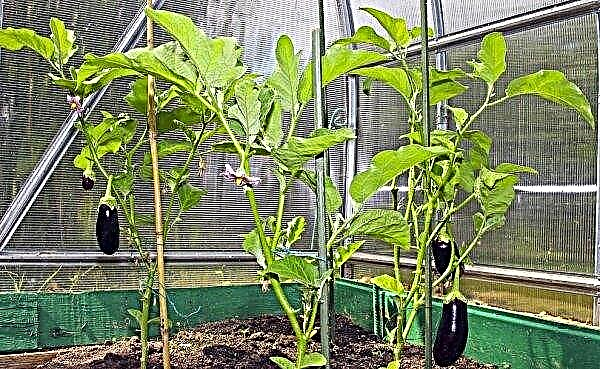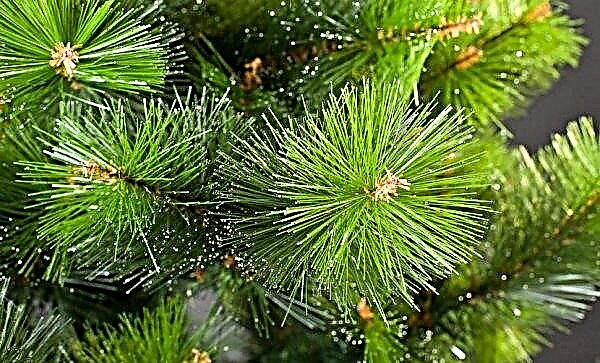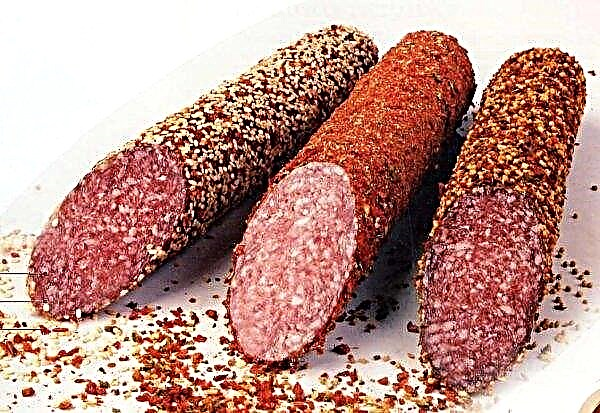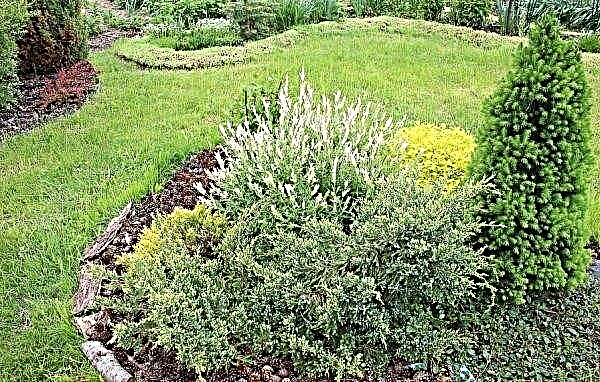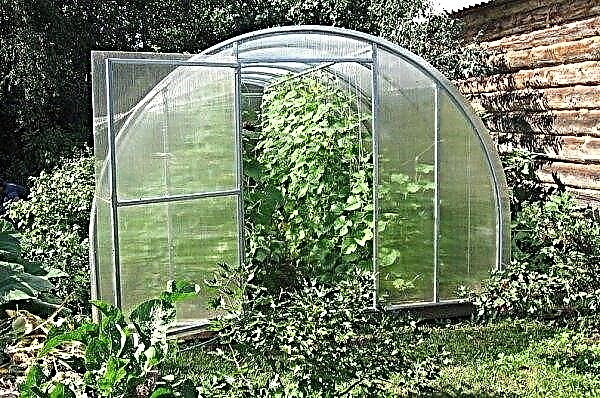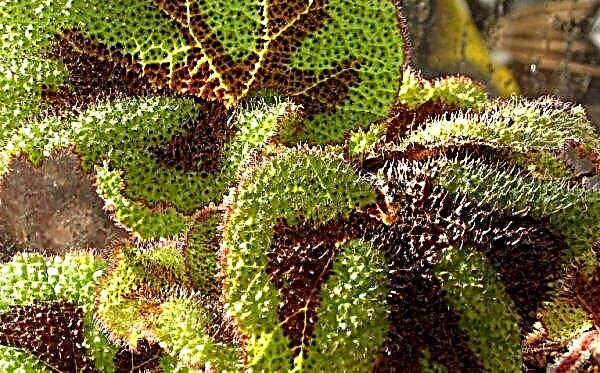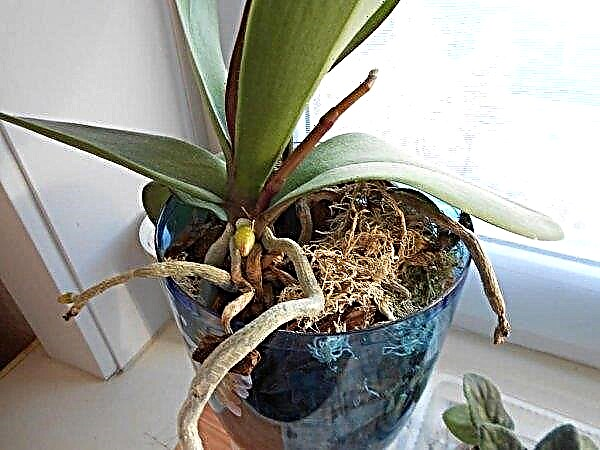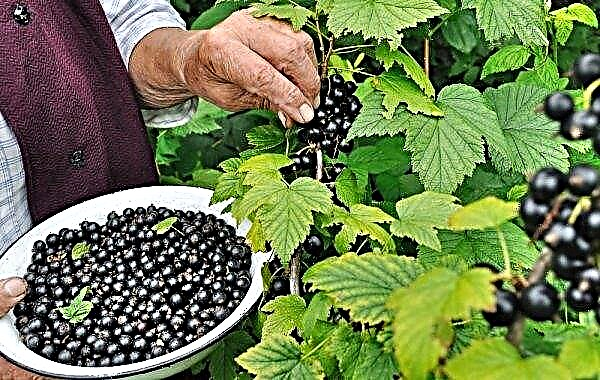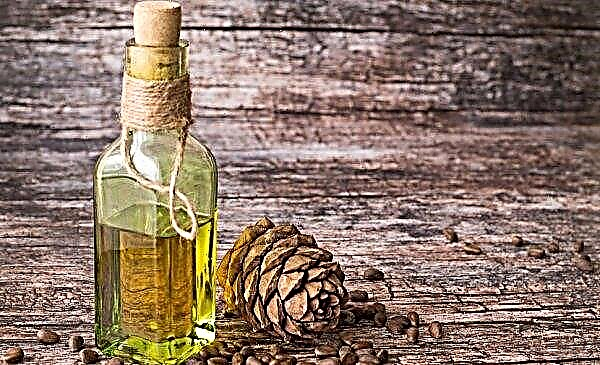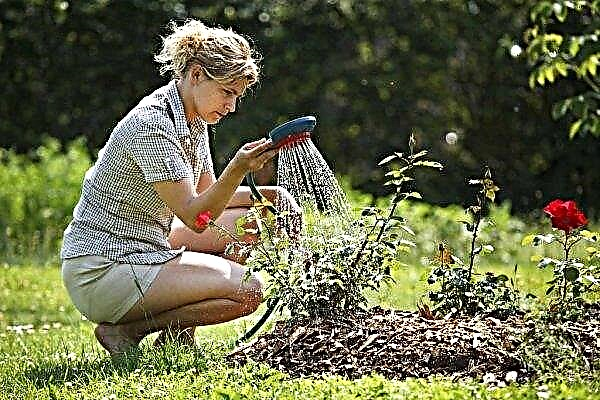Among the wide variety of decorative conifers used in landscape design, a special place is occupied by Himalayan pine or Wallichiana. She has a very beautiful and unusual needles. Many summer residents want to grow this plant in their plots. About the main characteristics of pine and the conditions for its growth at home - later in the article.
Botanical tree description
The Himalayan pine is a tree 10-15 m high with an openwork pyramidal crown 3-4 m wide. The branches are arranged horizontally. The bark on young trees is smooth and dark gray, and with age it becomes darker and crack. The needles are very long, about 15–20 cm, thin, collected in bunches of 5 pieces each, bluish-green, lasting 3-4 years.
Cones are large, 15-30 cm long, cylindrical in shape, light brown, studded with a large number of tar drops. Seeds are egg-shaped, brown, 5-6 mm in size. The homeland of this decorative tree is considered to be the wet and dry areas of the Himalayas at an altitude of 1800-4000 m, as well as Tibetan and Chinese mountain belts.
Important! Under favorable conditions, a tree can grow up to 60 cm in height and up to 20 cm wide in a year.
Different names
Himalayan pine or Wallichiana was introduced into Europe from the Himalayan mountains in 1823. It got its name in honor of the Danish and English surgeon and botanist Nathaniel Wallich, who studied the flora of India and Nepal. In addition to this name, there are others: Pinus wallichiana, Bhutanese, Wallich pine, Himalayan Weymouth pine (Hill Densa), Wallich pine, Griffith pine.

Landing
For planting Wallich pine, you need to choose well-lit places on a hill, without direct sunlight and protected from the wind. It is also preferable to plant on sandy, fertile, well-drained soils.
Did you know? Pine is the most numerous of the trees growing in Russia.
Planting trees should be, adhering to this scheme:
- Dig a hole 1.5–2 times the size of the root system of the seedling.
- Between plants leave a distance of about 4 m.
- At the bottom of the pit, it is advisable to pour a drainage layer (broken brick, crushed stone, pebbles) 20 cm thick.
- Mix chernozem with sand and peat in a ratio of 1: 2: 1 and pour into the depression to half, making a tubercle.
- Position the seedling vertically on an elevation, evenly spreading the roots.
- Sprinkle on top with earth and tamp, leaving the root neck at ground level.
- Pour abundantly with warm, settled water.
- Cover the trunk area with mulch.

When planting Himalayan pine in acidic soil, you need to add lime to the earth mixture with a calculation of 200-300 g per 1 plant. Also, in spring planting, add 150 g of superphosphate to each pit, and in the autumn - nitroammophoski, potassium nitrate or other potassium-phosphorus fertilizers.
Pine care
Care for the Wallich plant plays a very important role in the further growth and development of the decorative tree. It consists of regular watering, top dressing, loosening the soil, mulching the area around the trunks, pruning the crown, preventive measures against diseases and pests, warming young trees for the winter. Thanks to these actions, the pine will grow healthy and with a beautiful magnificent crown.
Watering and feeding
Watering should be moderate to 2 buckets of water per instance, since excessive moisture (stagnation of water) can lead to decay of the roots. Excessive drying of the earth is also detrimental to the plant. It is recommended to spray the pine tree throughout the year, increasing air humidity and preventing the appearance of harmful insects on the needles.

It is advisable to add top dressing the next year after planting. In early spring, you need to dilute in 20 liters of water 10 g of ammofoski, 10 g of nitrophoska, 10 g of urea and water 1 bucket per plant. In the second half of summer, dilute 30 g of potassium nitrate, 30 g superphosphate in 10 l of water and add 5 l of solution per 1 tree.
Loosening and mulching
After each watering (irrigation), you need to loosen the soil, preventing its compaction, and also providing the roots of the plant with access to fresh air. Along with this, weeds should be destroyed, on which pest larvae or fungi can be found.
To retain moisture in the ground, the near-stem zone must be covered with mulch (sawdust, peat, etc.). This procedure will prevent the drying out of the soil and prevent the growth of new weed grass.
Pruning
Pruning is recommended for the second year after planting. It can be done from spring to autumn. During sanitary cutting, remove all dry, damaged, diseased, bare branches. During the formation of the crown, the branches should be shortened by no more than a third. To increase the density of the crown, 1/3 of the growth of the current year is removed, while maintaining the shape of the crown.
Important! Griffith pine grows in almost all regions of the CIS countries, except the northern ones.
Possible diseases and pests
Himalayan pine, with proper care of it, is practically not exposed to the harmful effects of insects or diseases characteristic of conifers. It has a high immunity and can tolerate an environment with polluted air. Very rarely attacked by pine aphids.
But if the trees are not properly maintained, they can become seriously ill. As a preventive measure, you need to trim the damaged shoots and treat the plants with a 1% solution of copper sulfate.

Winter hardiness of pine
Wallich pine is a frost-resistant plant. It withstands frosts down to -30 ° C. But very often the branches do not tolerate heavy snowfalls, blizzard and break. Experts recommend shaking off the snow from the shoots to avoid fractures. The winter thaw also negatively affects Griffith's pine, since this species of coniferous trees wakes up very quickly after the first heat and can die during the returning frosts.
Did you know? The highest representatives of conifers in the world are the Lambert pines, reaching heights of up to 70–80 m.
In addition, the plants have a destructively bright sun on a frosty day, as a result of which the needles can simply burn out from the reflected sunlight. Young trees need obligatory shelter for the winter. It is carried out at the end of autumn, when a constant temperature of -5 ...- 10 ° C is established, and is removed in the spring, provided there are no daytime frosts.
 The branches do not need to be tied so as not to damage them. It is best to use burlap, thanks to which the plant can breathe and will be hidden from the sun. She will also be able to protect the branches from the weight of the snow.
The branches do not need to be tied so as not to damage them. It is best to use burlap, thanks to which the plant can breathe and will be hidden from the sun. She will also be able to protect the branches from the weight of the snow.
The use of wood in landscape design
Himalayan pine due to its decorative appearance is widely used in landscape design. It is planted in parks, malls, squares, along fences, in solitary landings. It looks spectacular next to such plants as: spruce, cypress, magnolia, horse chestnut. Used to create bonsai.
Himalayan pine will decorate any summer cottage. It can easily be grown at home. To do this, you need to carry out constant care of the plant, thanks to which the tree will grow beautiful and healthy.
